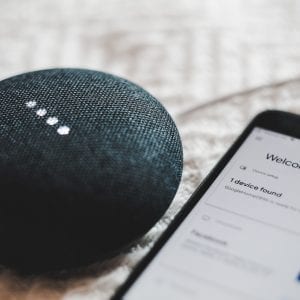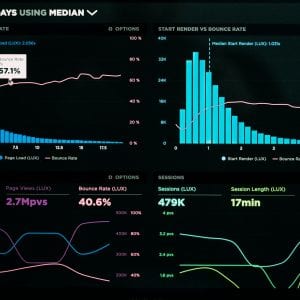2019 has opened us up to some wonderful and marvelous promises in the worlds of data science, machine learning, mobile networks, and augmented reality. These technologies are all on the edge of drastically changing the way many organizations handle their technology forever. If you haven’t yet heard about how any of these new technologies are changing the face of managed IT services, then you are in for a real treat. We are going to discuss the latest developments in each of these technological fields, as well as what kind of advantages they have to offer businesses today to prepare them for the competition tomorrow.
5G Mobile Networks
Fixed 5G mobile networks have been around for a while now, but it’s been most common for early adopters to often find themselves dealing with 3G mobile zones. That is all poised to change in 2019, as 5G mobile networks will become standard everywhere. What is 5G? With each new generation of mobile wireless technology, there comes a standard increase in the maximum speed they can provide, along with a shorter wait on receiving a response to requests sent to the towers. What is particularly notable about 5G mobile connectivity though is that it also increases the number of devices that can simultaneously connect to the same network. That is something that mobile network providers are really excited about because it enhances the service they are able to provide customers and decreases the cost of operating large networks.
What this means for 5G mobile network customers is that they can soon expect to see way more coverage, not only for 5G connectivity specifically but also in connectivity overall – even in areas that currently are unreachable for 4G mobile networks. 5G mobile connections sport enhanced antenna capabilities which will allow mobile network towers to cover much larger areas. Along with this, 5G mobile network customers can expect to experience internet speeds that they could only dream about on 4G mobile networks. 5G mobile networks are expected to support up to a whopping 20gbps speed in comparison to 4G mobile networks’ maximum of 2gbps. The latency – or the time it takes to get a response after sending a request for data from the mobile network – is expected to be as low as 1ms. Since 5G mobile networks will eventually utilize higher frequencies than 4G mobile networks do, customers can also soon expect fewer problems caused by signal interference.
Machine Learning
One of the primary advancements in machine learning that businesses and managed IT services can look to take advantage of in 2019 is natural language processing, which is the ability for voice-activated chatbot systems to understand naturally spoken language. 2018 was kind of a rough year for this technology, as many businesses adopted it only to see customers struggle to be understood by these systems well enough to navigate their directories. Fortunately, natural language processing has been improved vastly since then – enough that it is expected to soon make a huge impact on the service industry in ways that have never been seen before. Natural language processing is positioned to take over much more than just phone directory systems. It will soon be revolutionizing everything from fast food lines and job recruitment to loan processing. The best part of natural language processing is that it allows companies to gather information which they can use to improve their services. It is predicted that by the end of 2019, 40% of large companies will already have it or be in the process of adopting it. However, while artificial intelligence is great for fulfilling clear cut requests, it still fails to provide the human emotion and empathy that creates a truly fabulous customer service experience.
Data Science | Business Intelligence | Analytics
Another major trend in technology for 2019 involves the usage of connected cloud technologies. Many companies and IT managed service providers have realized that it simply is not ideal to be exclusive with data centres, private clouds, or public clouds. Different types of servers are ideal for different purposes. So they are now investing in hybrid cloud services. Hybrid cloud services allow a company to use a mix of public cloud, private cloud, and data center servers to provide different services for different purposes. All of these different types of servers are networked together with the same as they would be if they were all part of the same platform. Major companies like Microsoft, Amazon, and Google are jumping on this bandwagon through offering services which support hybrid connected cloud scenarios.
Since connected cloud technologies have enabled companies to gather, coordinate, and store greater amounts of data in centralized locations, data science has seen a much greater demand put on it to be able to analyze and use these massive amounts of data (also known as big data). Augmented analytics rises to meet this challenge, through using machine learning to automate the tasks of preparing, analyzing, and grouping big data into more manageable statistics that data scientists can draw conclusions from. While prior to this exploring all the possibilities of big data would have proven impossible for any human data scientist, augmented analysis has enabled data science to access key insights into big data. With this, data scientists can now explore the conclusions to hypotheses that would have been left unanswered before. The most amazing thing about augmented analysis though is its ability to uncover hidden patterns in big data that are completely unaffected by any personal bias.
Augmented Reality
Augmented reality seems like a really fancy word, but it’s really just a trending term for the growth of virtual business communications. As 5G mobile network technology is beginning to take root, augmented reality services have already been making moves in the tech industry which promises 5G mobile networks will likely meet widespread adaptation. Many business meetings are starting to be conducted over video conferencing networks now. Customers can now preview the products and services through the use of augmented reality platforms, which have the power to allow them to both see the after effects of a product or service’s usage, as well as interact with it in real time from any internet-connected mobile device. There are even rumors that with the advent of 5G mobile technology, customers will soon be able to get a fully immersive augmented reality experience through the use of virtual reality headsets.
Following closely on the heels of this comes connected cloud technologies which enable employees to access a company’s applications, files, network, and other digital work tools remotely. The Internet of Things (IoT) has made the power and reach of connected cloud technologies even stronger, through enabling managed IT administration to work remotely with employee’s mobile devices as part of a greater connected virtual network of devices. Drones have also become a huge part of the IoT world thanks to their ability to remotely monitor, report, and work with each other on projects such as physical location security and crop conditions.
The Future Of Technology Is Now
While we have done our best to describe the major advancements mobile networks, machine learning, augmented reality, and data science has to offer businesses and IT managed services in 2019, this is hardly an exhaustive list of what they all can do. Each of these quickly advancing fields covers an entirely new world of possibilities in innovations, careers, and uses which could easily fill a book. The best thing that any company or managed IT service can do for their future in 2019 is seriously investigating at least one of these new technological fields for ways they can best be integrated and implemented into product and service offerings. None of these technologies are showing any sign of simply being a passing trend. They are here to stay – and will quickly become the building blocks for more discoveries in the future of technology.




